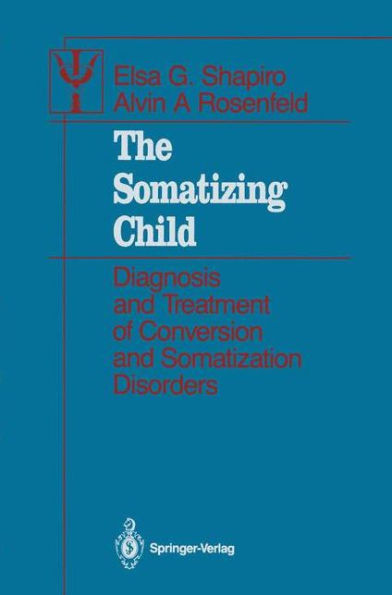The Somatizing Child: Diagnosis and Treatment of Conversion and Somatization Disorders
In the spring of 1982, we began our collaboration while on sabbatical in Jerusa lem. Working together at Hadassah Medical Center, we discovered that we had overlapping and complementary interests. The wonderful surroundings com bined with a warm friendship nourished the development of this book. E. G. S:s interest in neuropsychology, cognitive function, and diagnostic clas sification and A. A R:s interest in the development of normal sexual behavior, incest and its consequences for psychopathology, and psychoanalytic thought provided a broad perspective on the field of somatoform disorders. For E. G. S. , Lawrence A. Lockman, a faculty member in pediatric neurology at the University of Minnesota who has a great interest in these cases, was particularly helpful. Many of the ideas on case management came from his admonitions to the house staff on rounds regarding proper management of patients and families. When we began to write the book in the fall of 1984, two students of E. G. S:s became involved. Norman Cohen, then a post doc, was very interested in pain and biofeedback, having worked extensively in the Pain Clinic at the University of Minnesota Hospitals. He was seeing many of the children in the clinic who required biofeedback and was especially interested in those with headache. He agreed to write the chapter on headache.
"1112059541"
The Somatizing Child: Diagnosis and Treatment of Conversion and Somatization Disorders
In the spring of 1982, we began our collaboration while on sabbatical in Jerusa lem. Working together at Hadassah Medical Center, we discovered that we had overlapping and complementary interests. The wonderful surroundings com bined with a warm friendship nourished the development of this book. E. G. S:s interest in neuropsychology, cognitive function, and diagnostic clas sification and A. A R:s interest in the development of normal sexual behavior, incest and its consequences for psychopathology, and psychoanalytic thought provided a broad perspective on the field of somatoform disorders. For E. G. S. , Lawrence A. Lockman, a faculty member in pediatric neurology at the University of Minnesota who has a great interest in these cases, was particularly helpful. Many of the ideas on case management came from his admonitions to the house staff on rounds regarding proper management of patients and families. When we began to write the book in the fall of 1984, two students of E. G. S:s became involved. Norman Cohen, then a post doc, was very interested in pain and biofeedback, having worked extensively in the Pain Clinic at the University of Minnesota Hospitals. He was seeing many of the children in the clinic who required biofeedback and was especially interested in those with headache. He agreed to write the chapter on headache.
54.99
In Stock
5
1

The Somatizing Child: Diagnosis and Treatment of Conversion and Somatization Disorders
147
The Somatizing Child: Diagnosis and Treatment of Conversion and Somatization Disorders
147Paperback(Softcover reprint of the original 1st ed. 1987)
$54.99
54.99
In Stock

Product Details
| ISBN-13: | 9781461386797 |
|---|---|
| Publisher: | Springer New York |
| Publication date: | 10/24/2011 |
| Series: | Contributions to Psychology and Medicine |
| Edition description: | Softcover reprint of the original 1st ed. 1987 |
| Pages: | 147 |
| Product dimensions: | 6.10(w) x 9.25(h) x 0.01(d) |
From the B&N Reads Blog
